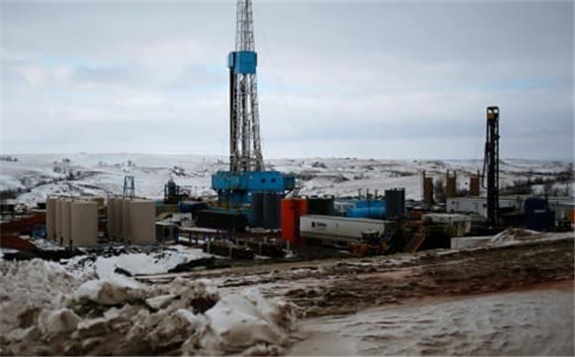The U.S. oil industry faces a bumpy road to recovery from the steepest slump in oil demand in history.

Oil demand in the United States and elsewhere is still trailing below last year’s levels, while a growing number of indebted shale producers struggle to refinance debts at these low oil prices and file for bankruptcy protection to restructure debt loads.
Oil prices may remain lower for longer with global oil demand unlikely to return to pre-crisis levels by the end of 2021, piling further pressure on the U.S. shale patch which, executives say, will need WTI Crude prices above $46 a barrel to see a substantial increase in completions of drilled but uncompleted wells (DUCs).
On top of the immediate financial concerns of many producers about profitability and debt levels, the U.S. oil industry also faces a shift in markets’ perception about the sector with increased investor calls for decarbonization.
Then there is the possibility of a new U.S. Administration with a president Joe Biden, who has pledged to prioritize renewable energy and decarbonization and ban new oil and gas leases on federal land.
The energy policy of the U.S. Administration adds another layer of uncertainty to the oil industry, which has already had to find a way to survive at $40 oil—by cutting capital expenditures and jobs and delaying investment decisions in growing production.
For U.S. consumers, gasoline prices at the start of October were at their lowest for this time of the year since 2016. For U.S. oil producers, the main reason for these lower gas prices—lower demand due to the pandemic—is a headwind for their operations and finances. Until demand recovers, financially weaker exploration and production firms and oilfield services companies will be in a survival mode and bankruptcies are expected to further grow.
“Without any near term horizon hope for improving economic conditions for U.S. producers, it is reasonable to expect that a substantial number of producers will continue to seek protection from creditors in bankruptcy before this year is over,” law firm Haynes and Boone said in its regular report on oil patch bankruptcies with data through August 31.
“The global oil suppliers of the world (OPEC, Russia, shale producers) have enough oil to bring to market in the $40 to $50 per barrel range. Only the most fit operators and service companies will survive, especially in the U.S. oil patch,” an E&P firm executive said in comments to the latest Dallas Fed Energy Survey carried out in mid-September.
Most executives—66 percent—of 154 E&P firms said they believe U.S. oil production has peaked, the survey showed.
A sustained recovery of activity will need prices at least $6 a barrel higher than the current WTI level of $40.
A substantial increase in the completion of DUCs is likely to come if oil prices rise to at least $46 a barrel, the majority of executives said in the survey.
“Oil prices are currently too low to sustain replacement drilling. This is by design I suspect. There will be no recovery as long as oil demand remains depressed,” another executive said in the survey.
“We are anxiously awaiting the fall redeterminations for shale players. We believe strongly that banks and operators will have to face reality, which will lead to widespread bankruptcies and asset sales. Banks will likely recover less than 35 cents of each $1 loaned,” another response reads.
“We suspect that low prices and producers struggling to source financing will mean that US oil output won’t recover to pre-virus levels by end-2022, if it ever does,” Capital Economics said in a recent report.
Demand for oil could be depressed not only because of the pandemic and a possible lasting shift in consumer behavior but also because of a possible new Administration in the White House.
“The Biden plan to tighten carbon emission and fuel economy standards while expanding the availability of renewables would depress the demand for oil, which would accelerate carbon transition risks for the industry in the short term,” Moody’s said in report last week.
U.S. executives expressed concerns about a Biden presidency in the Dallas Fed survey, with one saying “The November election could severely impair the long-term success of my business if Biden is elected,” and another ominously predicting “A Biden administration would absolutely kill our industry.”